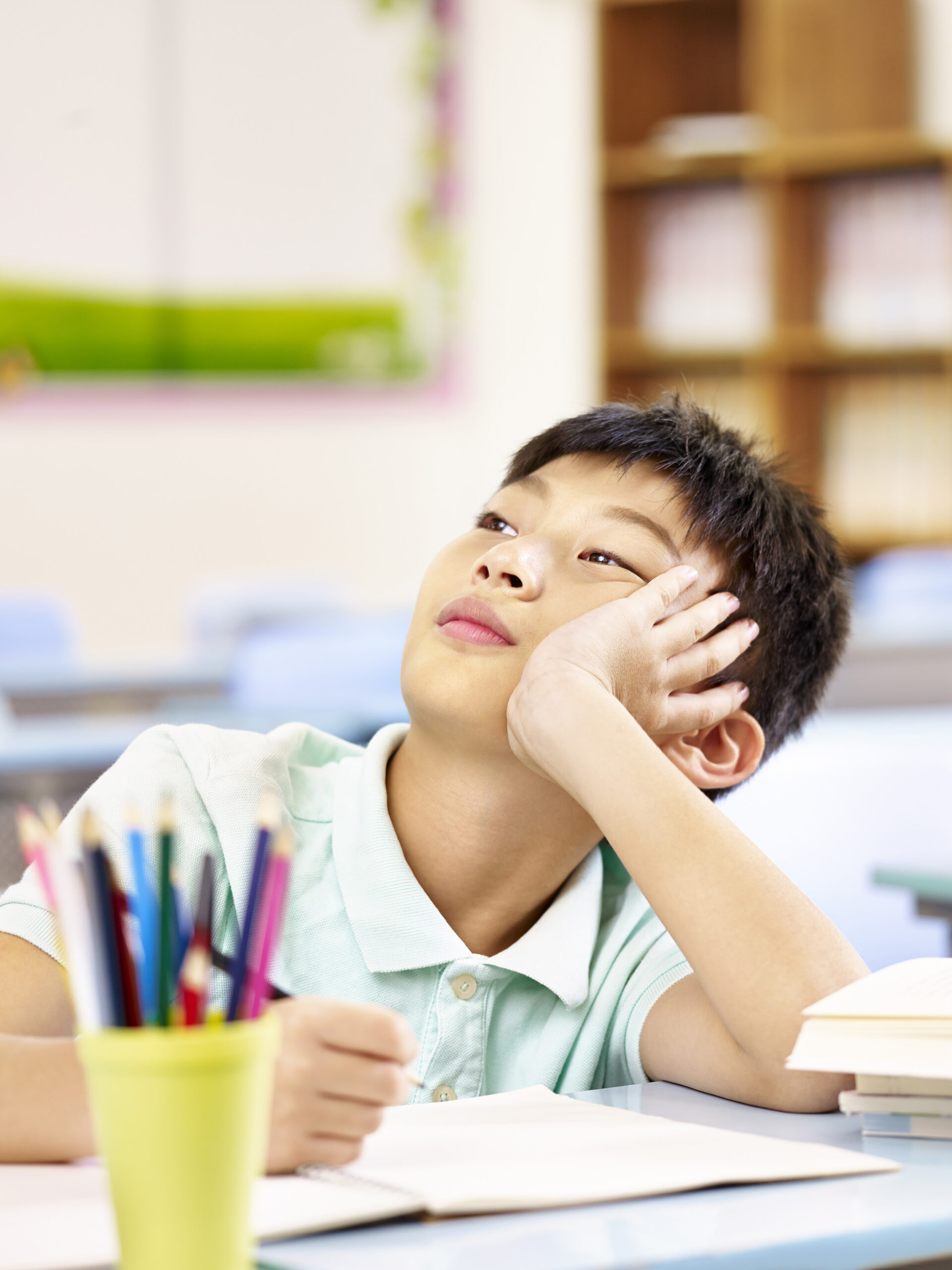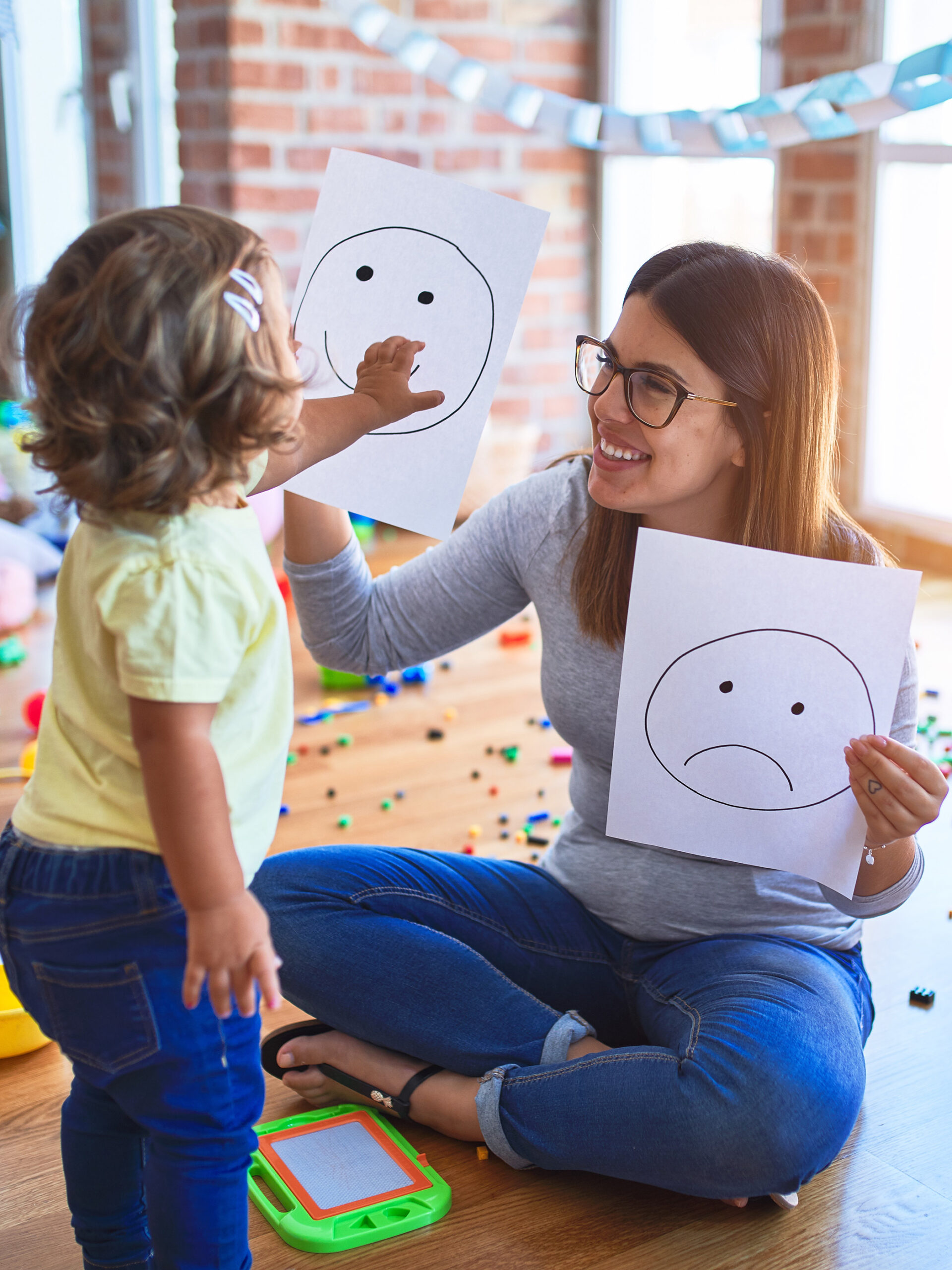MENTAL HEALTH GUIDE
Attention Deficit Hyperactivity Disorder (ADHD)
ADHD is a medical condition that makes it hard for children and adolescents to pay attention, stay focused and control their behaviors. ADHD can influence a child’s ability to organize and remember things. Often, children and adolescents with ADHD feel restless, lost, overloaded with information or impatient, like it’s hard to wait. They might also feel more singled out by teachers or parents, or unpopular among peers. These behaviors and feelings can make it challenging for them to function well at school and home, as well as get along with other kids.
External resources
National Institute of Mental Health
ADHD Statistics & Information
ADHD in Children and Teens: What You Need to Know
Children and Adults with Attention-Deficit/Hyperactivity Disorder (CHADD)
chadd.org
American Academy of Child & Adolescent Psychiatry – ADHD Resource Center
www.aacap.org
Crisis Resources
If your child expresses thoughts of wanting to harm themselves or others, call 9-1-1 or visit the nearest emergency department.
988 Suicide and Crisis Lifeline:
Call 9-8-8
Text any message to 9-8-8
Chat online at 988lifeline.org/chat
Crisis Text Line:
Text “HOME” to 741741
Save for later
Download, print or share on social media.
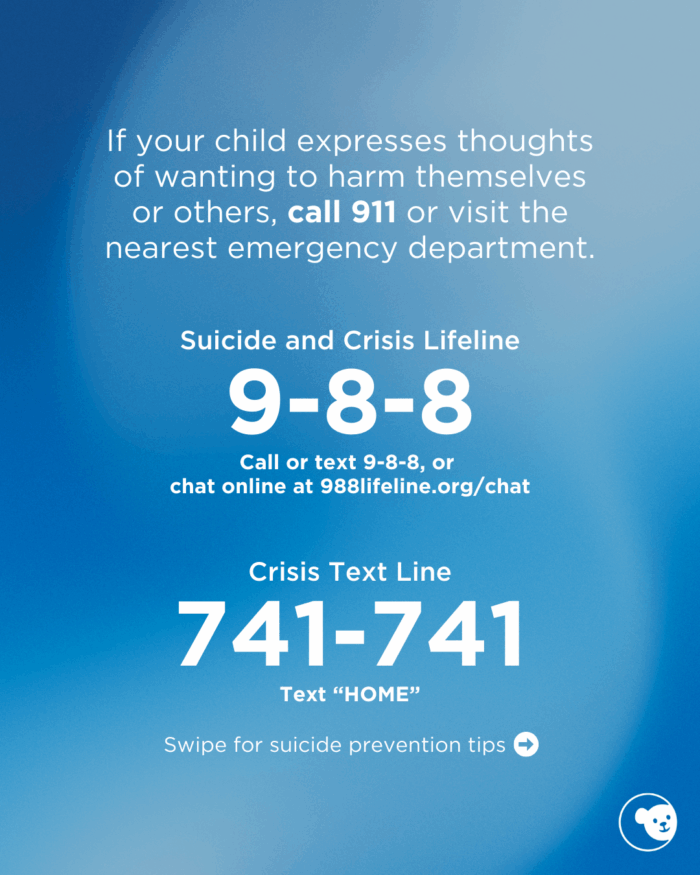
Learn more about CHOC’s pediatric mental health services
At CHOC, we specialize in providing a full spectrum of pediatric mental healthcare, including inpatient, intensive outpatient and outpatient program services.
Get 24/7 advice from CHOC
Attention Deficit Hyperactivity Disorder (ADHD) Overview
Around 11% of U.S. children ages 4 to 17 are diagnosed with ADHD, and boys are diagnosed with ADHD at more than twice the rate of girls.
What are the different types of ADHD?
ADHD can be categorized into three general types: hyperactive, inattentive or combined (in which a child experiences both symptoms of hyperactivity and inattention). Everyone with ADHD experiences different combinations of symptoms. Some are more hyperactive or impulsive, while others are more inattentive or easily distracted. It is important to note that not everyone with ADHD will experience all of the symptoms.
Learn more about the signs, symptoms and treatments for ADHD on choc.org.
What are the symptoms of hyperactive ADHD?
The following ADHD behaviors are seen in young children, so it’s important to look for these symptoms to make an early diagnosis.
- They are always on the move, can rarely sit still and are fidgety.
- They are a chatterbox! They may talk excessively and will have great difficulty when needing to stop talking.
- The child leaves their seat in the classroom or in other situations where remaining seated is expected.
- They run about or climb excessively in situations where it is inappropriate.
- They have difficulty playing or engaging in leisure activities quietly.
- They appear “on the go” or act as if “driven by a motor.”
- They blurt out the answers before the questions have been completed.
- They have difficulty awaiting their turn.
- They interrupt or intrude on others during conversations or games.
What are the symptoms of inattentive ADHD?
The inattentive type of ADHD can be subtle or more profound. Again, a child or teen must exhibit at least six of these behaviors to qualify for an ADHD diagnosis.
- They fail to give close attention to details or make careless mistakes in schoolwork, work or other activities.
- They have difficulty sustaining attention in tasks or play activities.
- They do not seem to listen when spoken to directly.
- They do not follow through on instructions and fail to finish schoolwork, chores or duties. However, this is not due to oppositional defiant disorder (ODD) or failure to understand instructions.
- They appear to be daydreaming a lot, and they don’t respond quickly when prompted or may seem like they are ignoring you.
- They have difficulty organizing tasks and activities.
- They may avoid, dislike or be reluctant to do tasks that require continued mental effort, such as schoolwork or homework.
- They may lose things that are necessary for tasks or activities such as toys, school assignments, pencils, books or tools.
- They are constantly forgetful and may forget instructions soon after being told.
- They may be easily distracted by things not related to the task at hand.
What are the symptoms of combined hyperactive and inattentive ADHD?
The combined type is when a child is both hyperactive and inattentive. This type of ADHD may have a larger impact on a child’s functioning and may be more challenging to manage. For a combined-type diagnosis, a child must have at least six symptoms from each sub type.
Other symptoms of all ADHD types
There are also a few other indicators of ADHD that may be seen from an outside perspective in a clinical or school setting.
- Frequent or repeated trips to the emergency department due to injuries or broken bones when playing may be indicators that a child or teen is impulsive and risk seeking. They may be more willing to give dangerous activities a try.
- At school, a child or teen may have disciplinary referrals for not following rules or directions; they may be impatient and cut in line; or they act a bit more immature and emotionally reactive. They may also get in trouble for hitting others or saying things that few other kids might say — they may not regulate emotions as well as other kids their age.
 Print this section
Print this section
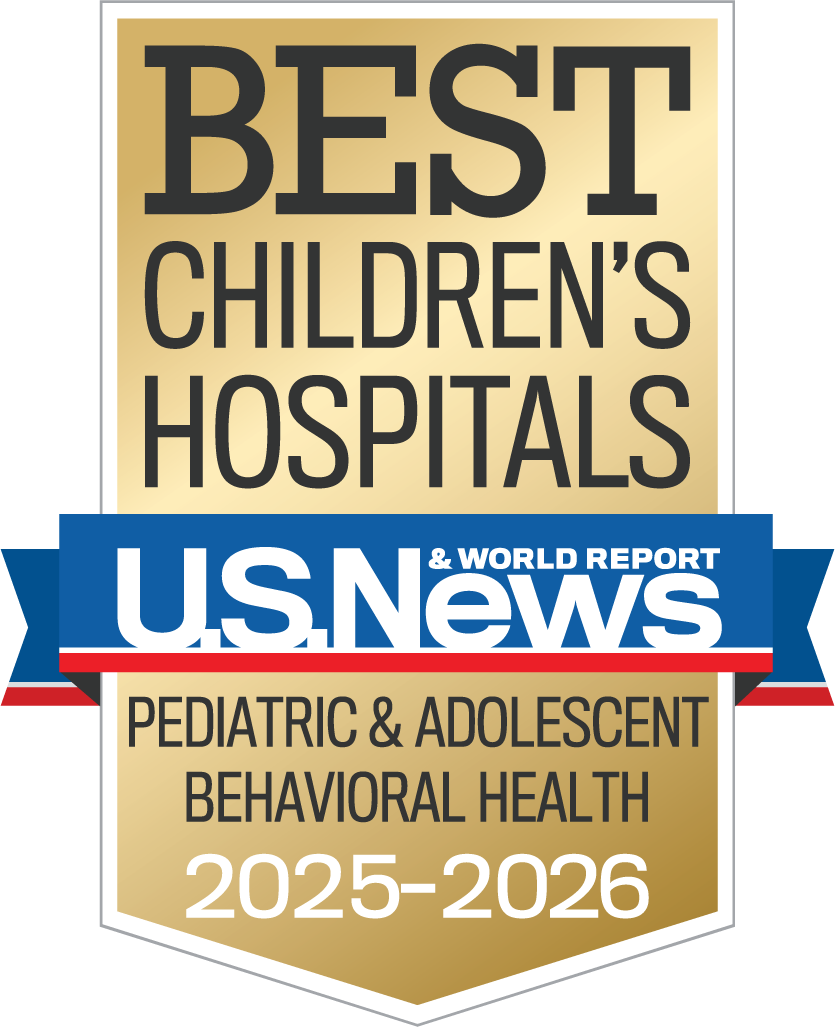
Learn more about CHOC’s Pediatric Mental Health Services
CHOC Hospital was named one of the nation’s best children’s hospitals by U.S. News & World Report in its 2024-25 Best Children’s Hospitals rankings and ranked in the behavioral health specialty.
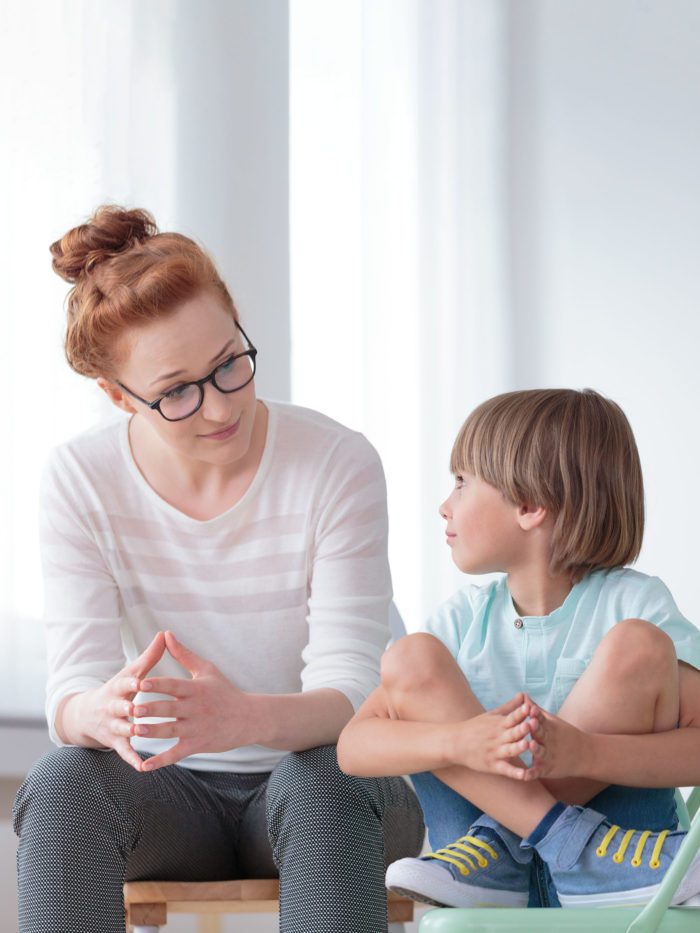
Tips for parents and caregivers of children with ADHD
It can feel overwhelming for parents and caregivers to manage their child’s ADHD. The following is a list of go-to strategies and tips that can help you and your child cope with the challenges of ADHD.
Catch your child being good
Notice the things you like about your child’s behavior and express your appreciation of the good behavior.
Reward your child’s good behavior and ignore negative behavior
If your child is behaving well, give them praise. If they’re misbehaving, so long as it isn’t dangerous or destructive, ignore it.
Use clear commands
Be clear and specific and tell your child what to do. For example, try “turn off the video games now” or “walk please” instead of saying, “don’t run.” Use one command at a time, as multiple steps can be difficult for the child to follow.
Use consequences and rewards
Make sure consequences and rewards are used immediately. Rewards should be used after positive behaviors to increase the likelihood that they will happen more. For example, a reward may be allowing your child to choose a dessert after finishing dinner. On the other hand, consequences should be used after challenging behaviors to help decrease their frequency and help your child learn what is not appropriate. A consequence may be removing your attention (as described above) or removing video games if a child refuses to do chores. It is important that the rewards and consequences are things your child cares about, are fair and related to the behavior, and are things that you can follow through with each time.
Identify and label emotions
Children are born with the ability to express emotions but not the ability to know how to appropriately label them. Teach your child about emotion and ways to express emotion by commenting on your child’s, yours and others’ emotions. For example, you might say, “I am very sad today” or “You are mad. It’s okay to be mad, and it is not OK to hit others.”
Develop routines
Help your child develop strategies to organize themselves. These might include a written daily schedule, a homework notebook, a special organizer for supplies, etc.
Give frequent breaks
When your child is doing a difficult task, such as homework, give regular 5-minute breaks to help with concentration.
Find treatment for your child
ADHD can impact children and teens for their entire lifetime, so the best way parents can help their kids is to know the signs and symptoms of ADHD and to get their child assessed earlier rather than later. If your child is diagnosed with ADHD, seeking treatment options can help reduce the impact of the disorder.
Behavioral therapy, medication or a combination of the two may be effective ways to treat ADHD. If a child or teen has mild to moderate symptoms of ADHD, behavioral therapy may be a sufficient treatment entirely.
For kids and teens with more severe ADHD symptoms, medication is very effective – it can help a brain with ADHD function like a neurotypical brain.

Featured article
 Print this section
Print this section
When your child with ADHD has difficulty sleeping
Many children with ADHD have difficulty sleeping at night, whether or not they are on medication. ADHD can cause hyperactivity in some kids, making it seem like they are “on the go” until nighttime. If a child is on stimulant medication, parents may see more challenging behaviors at night as the medication starts to wear off. Some children on medication may have difficulty falling asleep because the stimulants affect them the same way that caffeine affects adults. No matter the cause, there are some simple strategies that may help kids of all ages with ADHD get to sleep more easily.
Develop rituals/routines
A bedtime ritual is a powerful sign that it is time to sleep. It needs to be simple so the child can “re-create” the ritual even if the parent is not present. Try writing out the bedtime ritual to make it consistent. For young kids, this might be reading a book with a parent. For older kids, it could be reading quietly to themselves in their room. Avoid activities that are exciting or energizing, and avoid screens such as phones or tablets.
Social contact with parents, feeding and easy access to interesting toys can encourage children to be up late, so try to set limits on attention-getting behaviors at night.
Keep bedtime and wake-up times consistent
Bedtimes and waking times should be the same seven days a week. Regular mealtimes and activity times, including playtime with parents, also help set sleep times.
It is easier to enforce a waking time than a bedtime. For young kids in need of more structure, it might be helpful to try a color-changing nightlight with a timer. Parents can set the light to turn green when it’s time to get up and out of bed at the same time every morning.
Encourage self-soothing during or after bedtime
Avoid activities that depend on a parent’s presence, including rocking or holding the child until they fall asleep. Teach them to soothe themselves, such as giving the child a special blanket, a picture of their parent or a stuffed animal to hold while falling asleep.
Pay attention to the sleep environment
A cool, dark, quiet room is best. Background noises, sleep partners, bedding, favorite toys, and lighting can all affect a child’s ability to fall asleep.
Remove exciting toys, games, televisions, computers and radios from your child’s bedroom if your child is having trouble falling asleep or is often up at night. One or two comforting stuffed animals are ideal.
Limit awake time in bed
Hours spent awake in bed interferes with good sleep patterns. The goal is to make the child’s bed a place for sleeping only. Letting young kids cry themselves to sleep is not recommended.
Avoid drinks with caffeine
Caffeine is present in a wide range of beverages, such as tea, soda, cocoa and coffee. Drinking these beverages past the afternoon may make it more difficult for your child to settle down to sleep.
Chart your child’s progress
Praise your child for successful quiet nights. Consider marking successful nights on a star chart and providing rewards at the end of the week.
Consider medical problems
Allergy, asthma or conditions that cause pain can disrupt sleep. If your child snores loudly and/or has pauses in their breathing while they sleep, talk to your pediatrician.
While stimulant medication can make it harder for kids to sleep, some kids with ADHD may actually be helped by a small dose of stimulant medication at bedtime. This dose might help them to get more organized for sleep.
Medications for sleep need to be used very carefully in young children. Many sleep aids can cause complications or make sleep worse. Try medications to help your child sleep only under the close care of your child’s doctor.
Some children may ultimately need other bedtime medications — at least for a little while — to help improve sleep. Talk with your doctor before starting any over-the-counter or prescription medications.
 Print this section
Print this section
Tips for kids and teens with ADHD
Coping with ADHD can feel challenging sometimes. When you have ADHD, it is important to surround yourself with people who can give you a little extra help when needed, such as your parents and a counselor, teacher, coach, therapist or doctor. It can also help to keep some tips and tricks in mind:
Work on controlling your emotions
Kids and teens with ADHD often struggle to control their feelings. Using these five steps may be helpful in managing your emotions:
- Ask yourself: What makes you upset?
- Try to prepare yourself if you are going to be around something that upsets you.
- Try to catch your emotions earlier. Try noticing what happens to your body and your behavior as you become more upset.
- Take some time away from the situation.
- Help yourself gain control back using stress relief practices. For example, take a walk; imagine you are in a comfortable, relaxing place; or use deep breathing.
Help yourself stay focused
It can be hard to stay focused for kids and teens with ADHD. Try these things when you find it challenging to stay focused, especially in school:
- Fidget (move around if appropriate, or use a fidget object if you need to sit in one place)
- Doodle
- Drink sips of water
- Sit at the front of the class
- If you do not understand something, ask for help right away.
Improve your ability to keep track of things
It will be helpful to talk with an adult about your struggles with organizing and come up with a system you can stay on top of. Some ideas kids and teens have had include: having one specific place for each item, such as books, folders and backpack; color coding school folders by subject; and selecting a specific day and time to clean out your backpack. Organizing yourself will make it easier to get through the day and make you more independent!
Ask for help
A therapist, such as a psychologist, social worker or counselor, can help you understand and manage your struggles with focusing, paying attention and keeping track of things. Effective treatments for ADHD include Behavioral Therapy and Parent Training. For some people, medication can help. You can talk with your doctor or a psychiatrist to learn more about medication and if it is a good choice for you.
 Print this section
Print this section
Learn more about CHOC’s Pediatric Mental Health Services
CHOC Hospital was named one of the nation’s best children’s hospitals by U.S. News & World Report in its 2024-25 Best Children’s Hospitals rankings and ranked in the behavioral health specialty.
ADHD recommended reading
 Print this section
Print this section
Related guides
Attention Deficit Hyperactivity Disorder, or ADHD, is sometimes diagnosed alongside other mental health conditions such as anxiety and depression. Additionally, ADHD-like symptoms can prompt youth to experience issues with peers, such as bullying. For more information on other mental health conditions that can occur alongside ADHD, please visit our other mental health guides.
Additional Resources
ADHD books
- Defiant Children, Russell Barkley
- Parenting Hyperactive Preschoolers, Elizabeth Harvey, Sharonne Herbert, & Rebecca Stowe
- Taking Charge of ADHD, Russell Barkley
- Your Defiant Child, Russell Barkley and Christine Benton
- Learning to Slow Down and Pay Attention, Nadeau and Ellen Dixon
- Mindful Parenting for ADHD: A Guide to Cultivating Calm, Reducing Stress, and Helping Children Thrive, Mark Bertin MD
- The Explosive Child: A New Approach for Understanding and Parenting Easily Frustrated, Chronically Inflexible Children, Ross W. Greene, PhD
- Children: The Challenge: The Classic Work on Improving Parent-Child Relations – Intelligent, Humane, & Eminently Practical (Plume), Rudolf Dreikurs and Vicki Stolz
- Putting on the Breaks: Understand and Taking Control of Your ADD or ADHD, Patricia Quinn and Judith Stern
Related Articles
The guidance on this page has been clinically reviewed by CHOC pediatric experts.
For more health and wellness resources from the pediatric experts at CHOC:
Sign up for the Kids Health newsletter.
The contents of this webpage, including text, graphics, audio files, and videos (“Materials”), are for your general information only. The Materials are not intended to substitute qualified professional or medical advice, diagnoses, or treatments. CHOC does not recommend or endorse any specific tests, physicians, products, procedures, or other information that may be mentioned on or linked to this webpage. Always call your physician or another qualified health provider if you have any questions or problems. If you think you may have a medical emergency, call your doctor, go to the nearest emergency department, or call 911.
For more health information for your family visit health.choc.org


